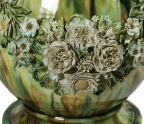
– HONORÉ DE BALZAC (1799-1850)
A vessel’s space with no limit
Every ceramic artist experiences a moment when what they have made becomes self-evident; not as a working vessel, or as an exhibit, but as a lump replete with its three-dimensional qualities in space-time. Their vessels appear in various forms depending on variables such as light and hour, changing the atmosphere completely. Ceramic artist Yeo Byonguk most certainly experiences such moments given that he has fashioned hollow objects with clay, in different shapes, and arranged them in different ways for decades.
A vessel is a ‘working object’, and this is Yeo Byonguk’s starting point; a hollow mass with its own weight and volume influenced by gravity. A vessel is often compared to a work of






